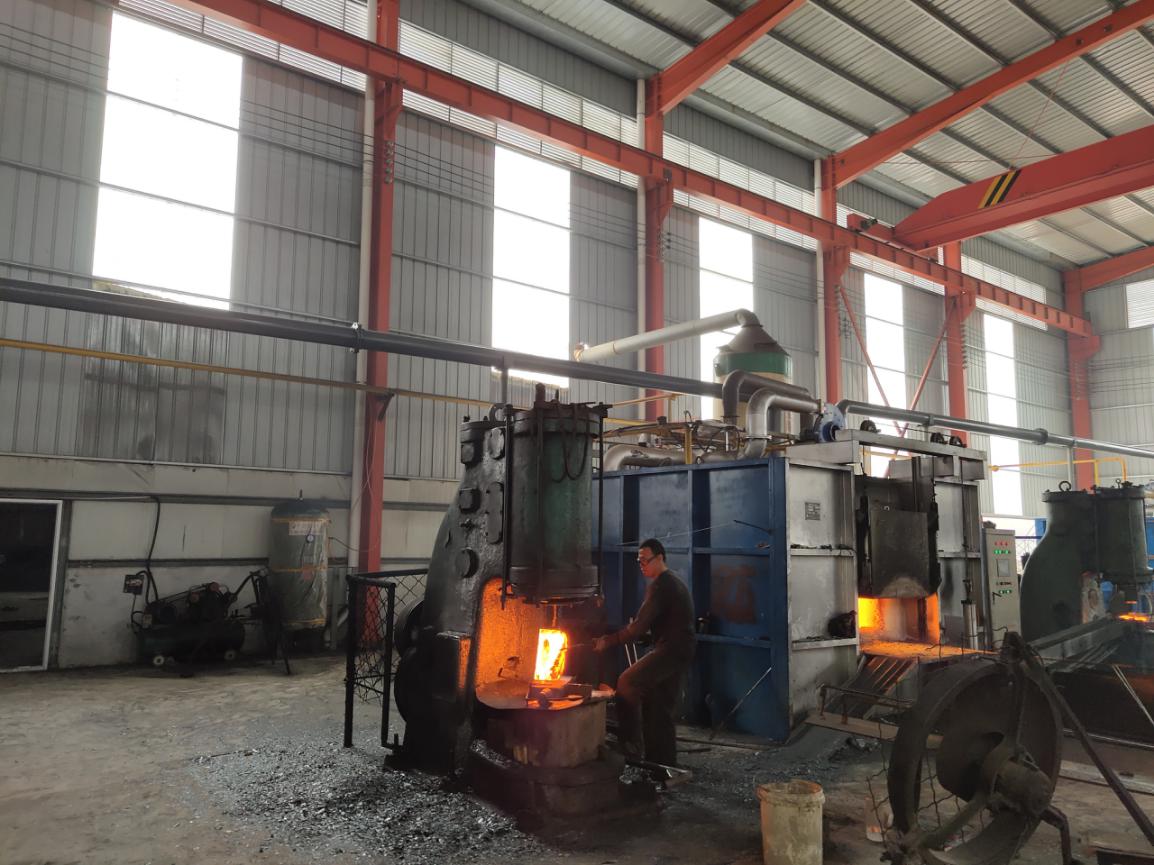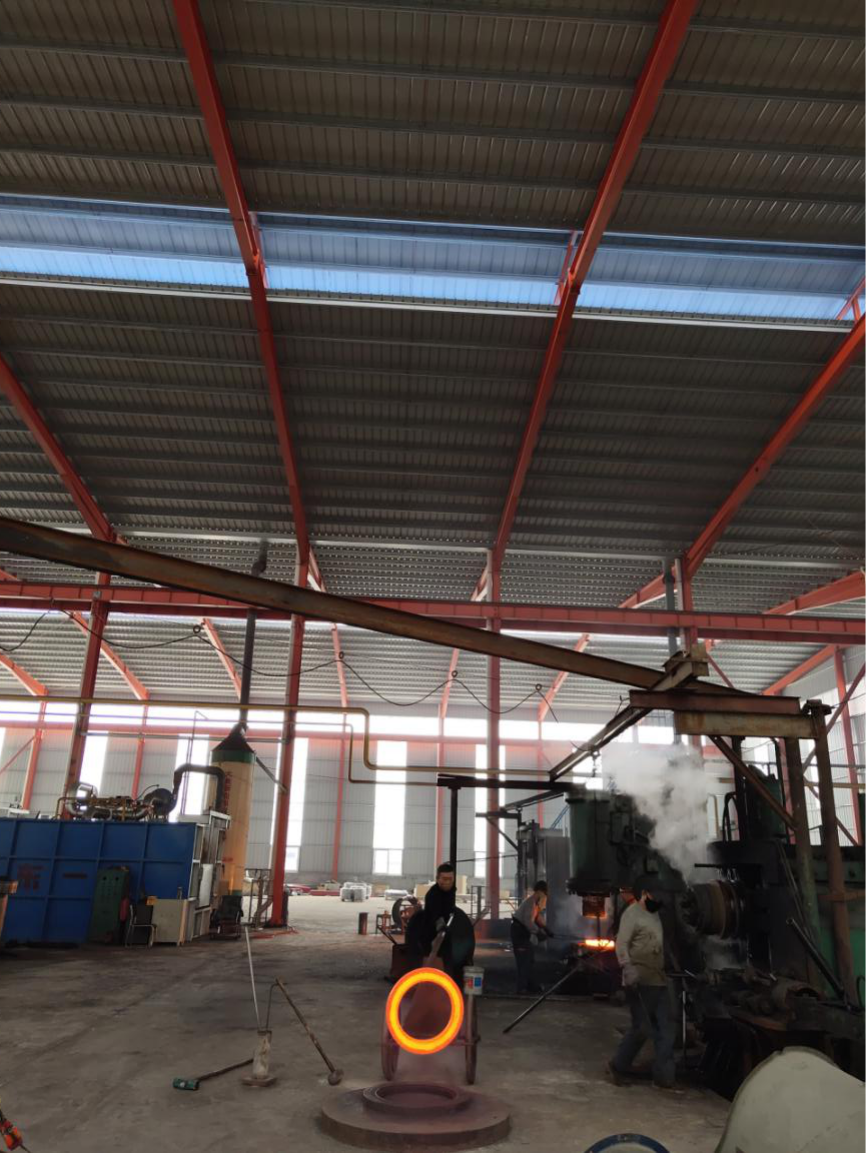



Forging is manufacturing process where metal is pressed, pounded or squeezed under great pressure into high strength parts known as forgings. The process is normally (but not always) performed hot by preheating the metal to a desired temperature before it is worked. It is important to note that the forging process is entirely different from the casting (or foundry) process, as metal used to make forged parts is never melted and poured (as in the casting process).
Forging can produce a piece that is stronger than an equivalent cast or machined part. As the metal is shaped during the forging process, its internal grain deforms to follow the general shape of the part. As a result, the grain is continuous throughout the part, giving rise to a piece with improved strength characteristics.
Some metals may be forged cold, but iron and steel are almost always hot forged. Hot forging prevents the work hardening that would result from cold forging, which would increase the difficulty of performing secondary machining operations on the piece. Also, while work hardening may be desirable in some circumstances, other methods of hardening the piece, such as heat treating, are generally more economical and more controllable. Alloys that are amenable to precipitation hardening, such as most aluminium alloys and titanium, can be hot forged, followed by hardening.
Production forging involves significant capital expenditure for machinery, tooling, facilities and personnel. In the case of hot forging, a high-temperature furnace (sometimes referred to as the forge) is required to heat ingots or billets. Owing to the size of the massive forging hammers and presses and the parts they can produce, as well as the dangers inherent in working with hot metal, a special building is frequently required to house the operation. In the case of drop forging operations, provisions must be made to absorb the shock and vibration generated by the hammer. Most forging operations use metal-forming dies, which must be precisely machined and carefully heat-treated to correctly shape the workpiece, as well as to withstand the tremendous forces involved.
Cast flange, rough shape, accurate size, small amount of processing, low cost, but casting defects (pores). Cracks (inclusions) castings of the internal structure of the shape is not good (if cutting, streamline worse).
Forged flanges are usually more carbon-free than cast flanges. They are less prone to rusting. They streamline, the structure is relatively compact, cast flange superior mechanical properties.
Inappropriate forging process can also lead to large or non-uniform grain, hardening cracking phenomenon, forging cost is higher than the casting flange.Forgings withstand higher shear and pull than castings.Casting has the advantage of making more complex shapes with lower costs.
In carbon steel flange forging flange has a certain working principle, in accordance with the production process and the use of carbon steel flange and have a certain working principle, the working principle is to use carbon steel flange gasket insulation gasket insulation High-strength carbon steel flange insulation, carbon steel flange on both sides of the electrical insulation flange factory work. Mary Iron and galvanized pipe commonly used (section iron) than steel, iron stronger than the intensity. Carbon steel, mild steel and low carbon steel, mild steel carbon content, easy to accept a variety of processing such as forging carbon steel flange machining, welding and cutting, commonly used in the chain, rivets, bolts, shaft manufacturing, Yanshan is a low carbon steel flange flange products. Forging the blank into an angle or shape of the forging process.
AIGUO has focused on forged flanges for over 25 years. All standard flanges including Blind flanges,Plate flanges,Weld Neck flanges,Slip On flanges,Lap Joint flanges,Loose and Socket Weld flanges,as well as special flanges are guaranteed the traceability.